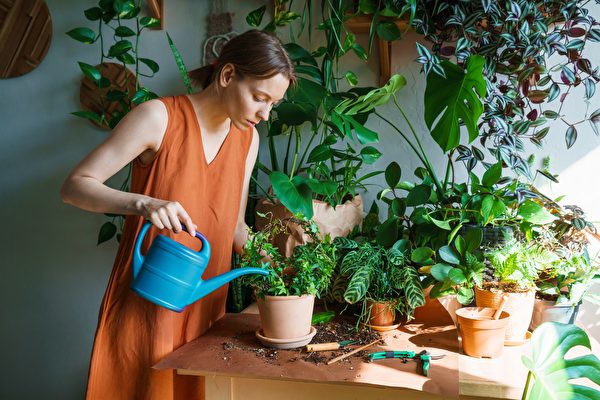With the rise in temperature, people can feel the footsteps of summer approaching. During this scorching season, it is essential for both humans and plants in the garden to stay adequately hydrated. However, experts have issued a warning that watering plants during hot weather requires caution to prevent potential mistakes that could lead to plant deaths.
According to a report from the UK’s Daily Mirror, gardening expert Mark Lane emphasized that one of the worst mistakes is watering plants at the wrong time, especially on hot days. Lane stated, “The best time to water is between 5 a.m. and 9 a.m. when the outdoor temperature is cooler, resulting in less water evaporation.” Watering in the morning as opposed to the evening is more suitable as plants dry out quickly, helping to prevent diseases caused by fungal infections.
Watering in the evening can result in water pooling on the soil surface, near the roots, and on the leaves, leading to fungal growth, insect infestation, plant rot, and potential plant death.
Experts from the UK-based shed manufacturer Power Sheds also provided several tips on how to protect plants in high temperatures. Firstly, it is recommended to move all container plants to a shaded area when a heatwave strikes.
During heatwaves, potted plants are often the first to wither. To protect them, move them to a shady spot to shield them from the harsh sun rays; otherwise, they may quickly wither and die.
The experts further advise against overwatering lawns during hot weather. Excessive watering during a heatwave can scorch the grass, resulting in more harm than good.
Watering the lawn once a week and mowing it regularly can help maintain its lush appearance and vibrant green color.
Another tip is to adjust the blade height of the lawnmower slightly higher to allow the grass to provide maximum shade for the soil, preventing it from drying out.
In high temperatures, the greatest risk to plants is the soil drying out. The first line of defense should involve using a layer of mulch to help soil retain moisture after watering. There are various materials that can be used as mulch, with grass clippings being an excellent option.
Lastly, ensure that your plants are in the right type of pots to retain water for as long as possible. Unglazed terracotta pots allow water in the soil to evaporate more easily, leading to faster drying and potential plant death.
The simplest solution is to use sealed terracotta pots or apply a specialized sealant to both the inside and outside of unsealed terracotta pots.
Additionally, black plastic pots absorb radiant heat, causing water in the soil to evaporate more quickly. It is advised to use light-colored pots that reflect radiant heat for better moisture retention.

